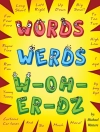Select the right task, at the right time, for the right phase of learning
Young students come to elementary classrooms with different background knowledge, levels of readiness, and learning needs. What works best to help K–2 students develop the tools to become visible learners in mathematics? What works best for K-=–2 mathematics learning at the surface, deep, and transfer levels?
In this sequel to the megawatt bestseller Visible Learning for Mathematics, John Almarode, Douglas Fisher, Kateri Thunder, John Hattie, and Nancy Frey help you answer those questions by showing how Visible Learning strategies look in action in K–2 mathematics classrooms. Walk in the shoes of teachers as they mix and match the strategies, tasks, and assessments seminal to making conceptual understanding, procedural knowledge, and the application of mathematical concepts and thinking skills visible to young students as well as to you.
Using grade-leveled examples and a decision-making matrix, you’ll learn to
- Articulate clear learning intentions and success criteria at surface, deep, and transfer levels
- Employ evidence to guide students along the path of becoming metacognitive and self-directed mathematics achievers
- Use formative assessments to track what students understand, what they don’t, and why
- Select the right task for the conceptual, procedural, or application emphasis you want, ensuring the task is for the right phase of learning
- Adjust the difficulty and complexity of any task to meet the needs of all learners
It’s not only what works, but when. Exemplary lessons, video clips, and online resources help you leverage the most effective teaching practices at the most effective time to meet the surface, deep, and transfer learning needs of every K–2 student.
Tabela de Conteúdo
List of Videos
Acknowledgments
About the Authors
Introduction
What Works Best
What Works Best When
The Path to Assessment-Capable Visible Learners in Mathematics
How This Book Works
Chapter 1. Teaching With Clarity in Mathematics
Components of Effective Mathematics Learning
Surface, Deep, and Transfer Learning
Moving Learners Through the Phases of Learning
Differentiating Tasks for Complexity and Difficulty
Approaches to Mathematics Instruction
Checks for Understanding
Profiles of Three Teachers
Reflection
Chapter 2. Teaching for the Application of Concepts and Thinking Skills
Mr. Southall and Number Combinations
Ms. Mc Lellan and Unknown Measurement Values
Ms. Busching and the Ever-Expanding Number System
Reflection
Chapter 3. Teaching for Conceptual Understanding
Mr. Southall and Patterns
Ms. Mc Lellan and the Meaning of the Equal Sign
Ms. Busching and the Meaning of Addition
Reflection
Chapter 4. Teaching for Procedural Knowledge and Fluency
Mr. Southall and Multiple Representations
Ms. Mc Lellan and Equality Conjectures
Ms. Busching and Modeling Subtraction
Reflection
Chapter 5. Knowing Your Impact: Evaluating for Mastery
What Is Mastery Learning?
Ensuring Tasks Evaluate Mastery
Ensuring Tests Evaluate Mastery
Feedback for Mastery
Conclusion
Final Reflection
Appendices
A. Effect Sizes
B. Teaching for Clarity Planning Guide
C. Learning Intentions and Success Criteria Template
D. A Selection of International Mathematical Practice or Process Standards
References
Index
Sobre o autor
Nancy Frey is a Professor in Educational Leadership at San Diego State and a teacher leader at Health Sciences High and Middle College. She is a credentialed special educator, reading specialist, and administrator in California. She is a member of the International Literacy Association’s Literacy Research Panel. Her published titles include The Illustrated Guide to Visible Learning, Welcome to Teaching Multilingual Learners, Teaching Foundational Skills to Adolescent Readers, and RIGOR Unveiled: A Video-Enhanced Flipbook to Promote Teacher Expertise in Relationship Building, Instruction, Goals, Organization, and Relevance.












